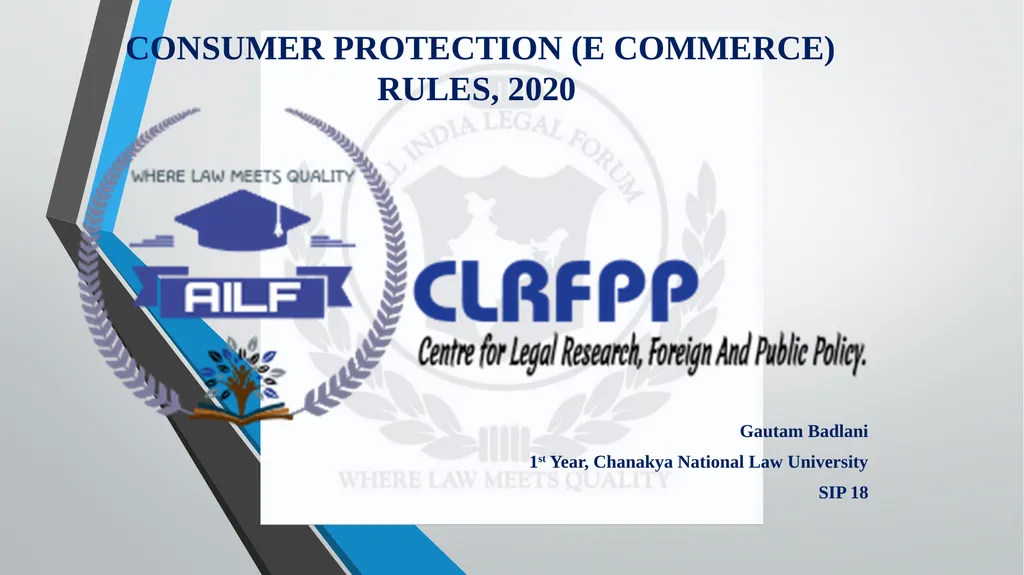CONSUMER PROTECTION (E COMMERCE) RULES, 2020
Author : pamella-moone | Published Date : 2025-05-16
Description: CONSUMER PROTECTION E COMMERCE RULES 2020 Gautam Badlani 1st Year Chanakya National Law University SIP 18 PURPOSE To understand the scope and salient features of the Consumer Protection ECommerce Rules 2020 To understand the concept
Presentation Embed Code
Download Presentation
Download
Presentation The PPT/PDF document
"CONSUMER PROTECTION (E COMMERCE) RULES, 2020" is the property of its rightful owner.
Permission is granted to download and print the materials on this website for personal, non-commercial use only,
and to display it on your personal computer provided you do not modify the materials and that you retain all
copyright notices contained in the materials. By downloading content from our website, you accept the terms of
this agreement.
Transcript:CONSUMER PROTECTION (E COMMERCE) RULES, 2020:
CONSUMER PROTECTION (E COMMERCE) RULES, 2020 Gautam Badlani 1st Year, Chanakya National Law University SIP 18 PURPOSE To understand the scope and salient features of the Consumer Protection (E-Commerce) Rules, 2020 To understand the concept of market place and inventory entities. To make certain suggestion regarding the regulation of E-Commerce in India. INTRODUCTION The Consumer Protection (E-commerce) Rules, 2020, based on the lines of the Consumer Protection Act, 2019, were notified by the Ministry of Consumer Affairs, Food and Public Distribution. Single brand retailers in single as well as multiple format come under the domain of these rules. These rules classify e-commerce entities into marketplace as well as inventory models. SCOPE It includes the purchase and sale of goods on the electronic as well as digital form. Digital products as well as all types of e-commerce businesses will come under the domain of these rules. These rules recognize and regulate not only those businesses which are incorporated in India but also those companies which engage on business practices in India either physically or electronically. Thus, foreign firms will not be able to escape liability for any unfair trade practice undertaken by them merely because they are not established within the territory of India. Thus, these rules included business-to-business (B2B) model, Business-to-consumer (B2C) and Business-to-business-to-consumer (B2B2C) model. CONSUMER PROTECTION (E COMMERCE) RULES, 2020 SALIENT FEATURES These rules make it mandatory for the e-commerce entities to display information about the payment mechanism, guarantee and warranty, refund, Shipping and delivery processes, etc. Furthermore, they are also required to display information about the country of origin. This provision is also mentioned in the Legal Methodology Act. The business entities are also required to appoint a grievance officer and to redress the consumer disputes in a timely and effective manner. The name and contact details of the grievance officer have to be made public by the e-commerce entity. Thus, the consumer will now have the option to lodge their grievances with an internal mechanism operating within the e-commerce entity. Furthermore, the rigid timeline of 1 month for the redressal of the consumer dispute will ensure that the consumers are redressed in a timely manner. Furthermore, the sellers of products on e-commerce entities are also requires to appoint a grievance redressal officer. The e-commerce platforms are also required to appoint a nodal officer who will be responsible for ensuring compliance with the Consumer Protection rules. Section














